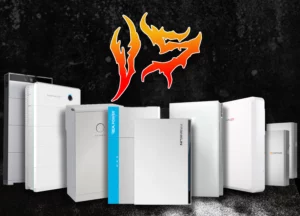Net Metering VS Gross Metering, How the Change Happened

I want to tell a story about, the world of solar power was a tale of two meters: gross and net. Picture this: a cozy neighborhood where houses adorned with solar panels dotted the rooftops like shimmering tiles under the sun. Each homeowner played a different game with their meters, and as the story unfolded, so did the wisdom behind their choices.
Enter the world of Gross Metering. This metering method was like an old-school accountant, meticulously tallying every single electron produced by those gleaming solar panels. The utility company paid a set rate for every unit of electricity generated, regardless of whether it was used in-house or sent back to the grid. It seemed simple, straightforward even, but there was a catch.
The catch was this: while the homeowners received compensation for all their generated energy, they still had to purchase electricity from the grid at the retail price. As electricity prices from the grid climbed higher, the fixed rates of the feed-in tariffs offered by utility companies dwindled in comparison. It was a bit like trading in gold for silver, and suddenly, the shine wore off.

- Solar panels generate electricity.
- power is sent to an inverter and then a smart meter
- power is sold off to the grid.
- power is purchased back from the grid to power your home.
Net Metering, on the other hand, was the new hero in town. This method played by different rules. Instead of measuring every speck of electricity, it looked at the bigger picture. When the sun beamed down, the solar panels worked their magic. If the house needed less power than the panels produced, the excess electricity flowed into the grid, spinning the meter backward like a time-traveling clock.
Here’s where the story gets interesting: for every unit sent back to the grid, homeowners received credits at the same rate they would pay for consuming electricity. The result? A balanced scale. Homeowners only paid for the “net” energy they used from the grid, which meant fewer bills and more savings. As energy prices soared, net metering became the golden ticket, the savvy choice for new solar installs.
But wait, there’s more! Cue the Battery. Imagine a trusty sidekick that swoops in to save the day. With net metering and a battery in tow, homeowners unlocked a new level of power independence. During sunny days when the panels churned out more electricity than needed, the surplus energy filled the battery’s belly. It was like saving sunshine for a rainy day.
When the stars twinkled and the solar panels slumbered, the battery stepped up. It became the source of power, supplying the house with stored energy, reducing reliance on the grid even further. The magic? Well, the meter spun less backward when the battery joined the scene. Homeowners stored excess energy and used it when they pleased, playing a clever game of energy management.
So, why the push for net metering and batteries in new solar installs? Simple economics, my friends. With feed-in tariffs dwindling and current energy prices soaring, net metering became the hero in the battle against high bills. Adding a battery to the mix elevated the game, granting homeowners greater control over their energy destiny.
In this neighborhood of solar dreams, the tale is clear: net metering coupled with batteries is the modern-day fairytale ending. It’s a story where savings grow, energy independence thrives, and the sun always shines a little brighter.
And that, my friends, is how the world of solar power found its happily ever after.

- Solar panels generate electricity.
- Solar is sent to an inverter and then a smart meter.
- all solar power is used first to power everything in the home when the sun is shining.
- Left over power generated is then sold to the grid.
- Any additional needed electricity is bought from the grid when the system is not outputting as much as needed (e.g at night)
Share With Your Friends!
Written By:
Luke Cove
Managing Director
Lightning Solar & Electrical











